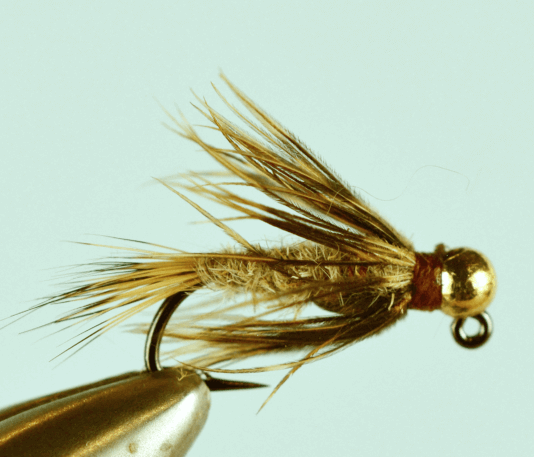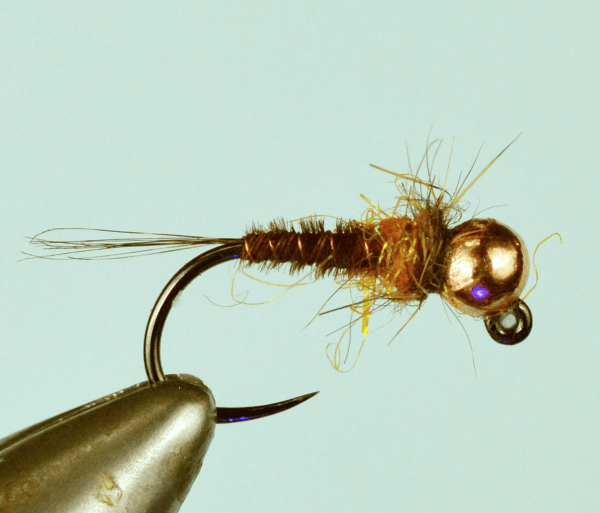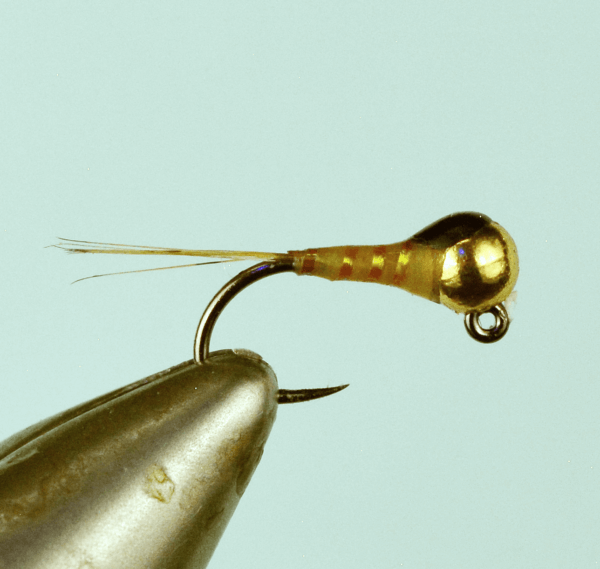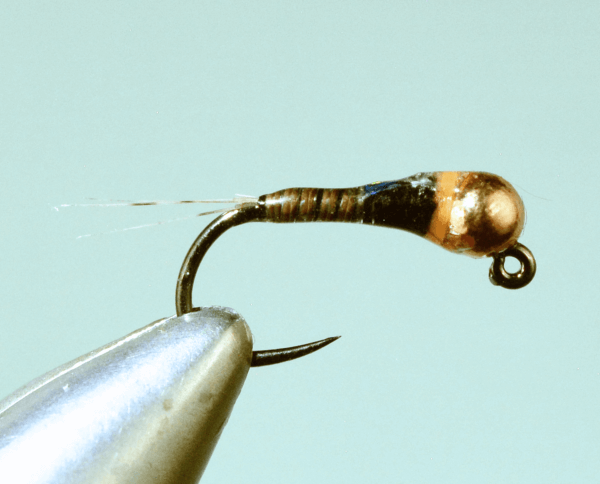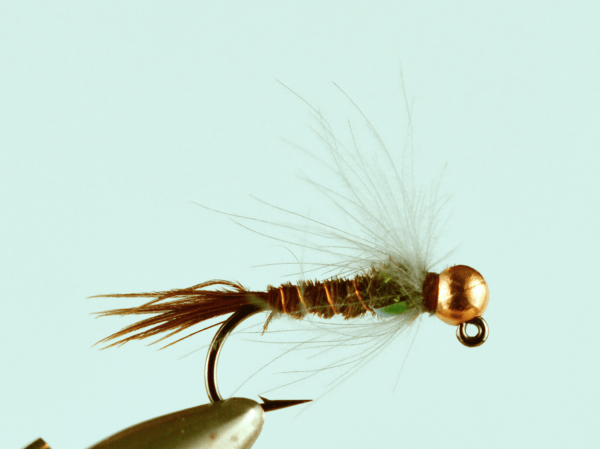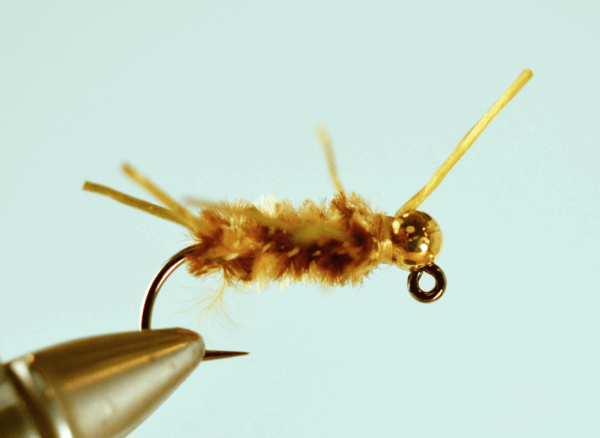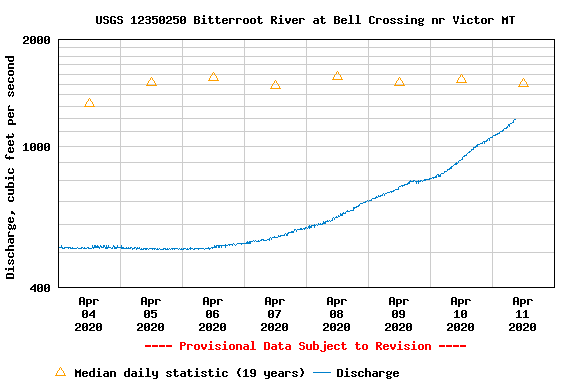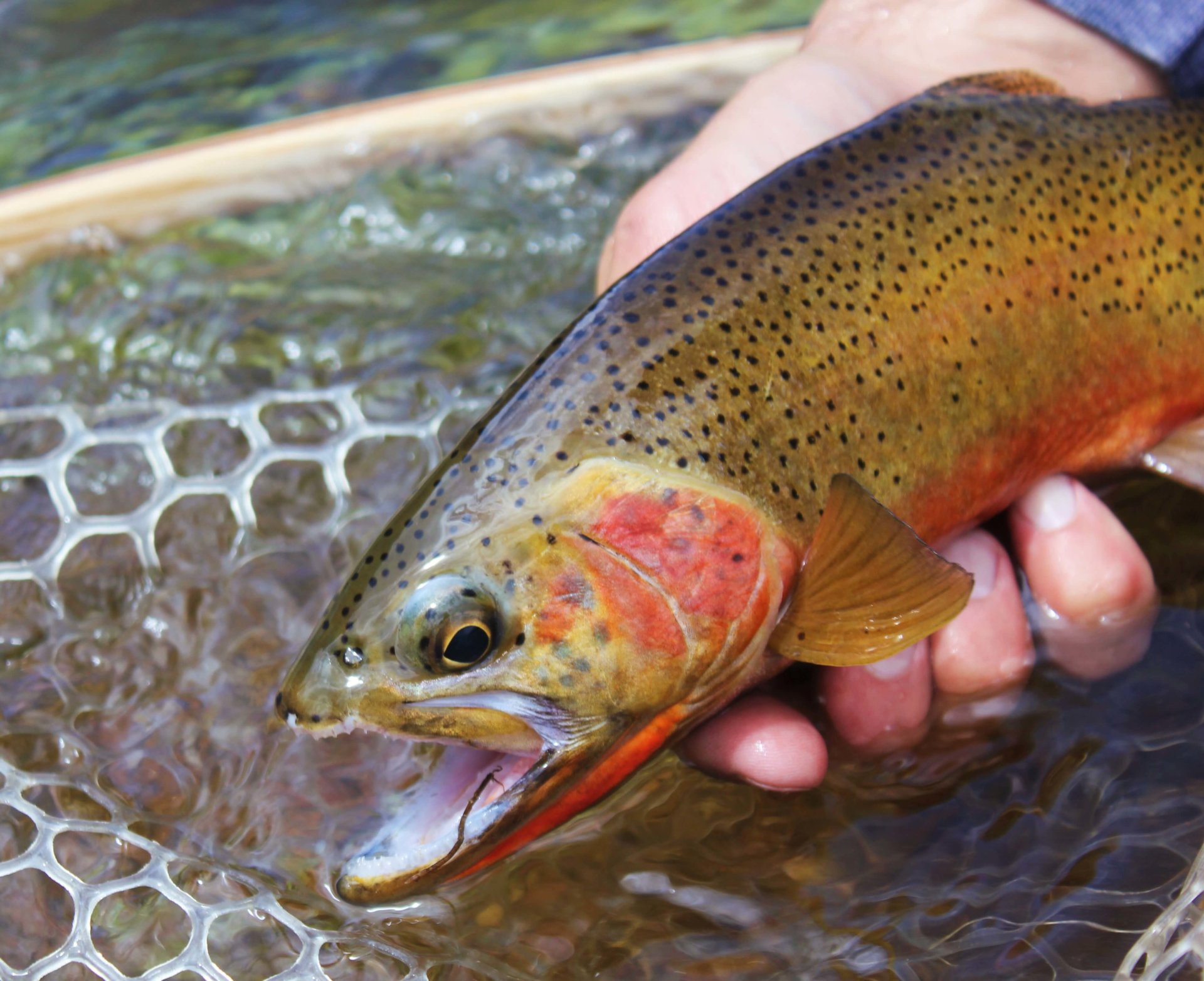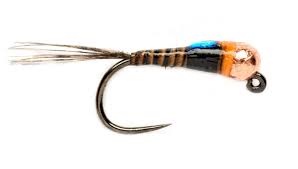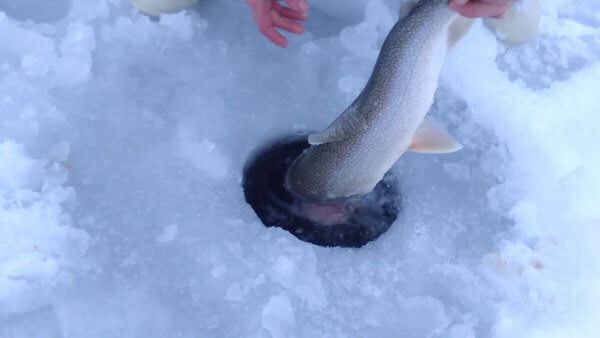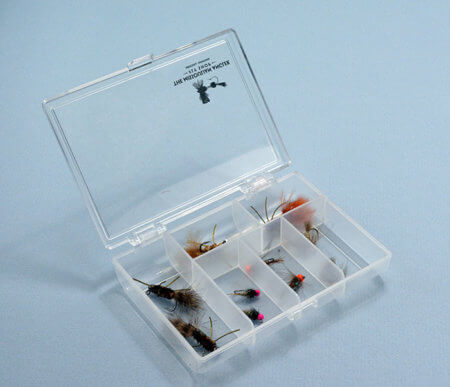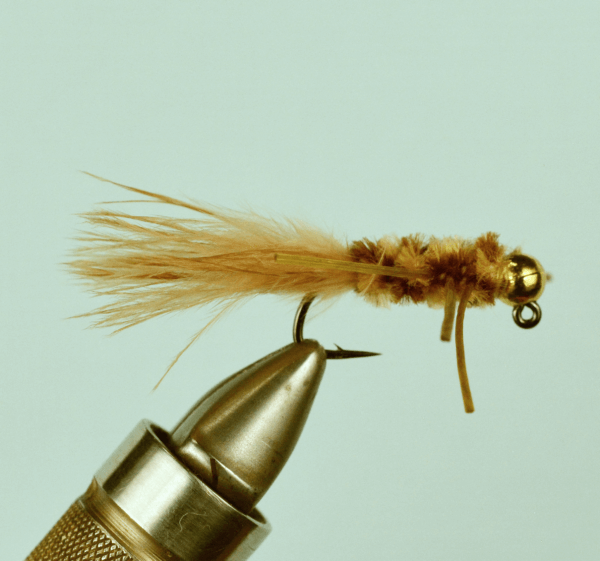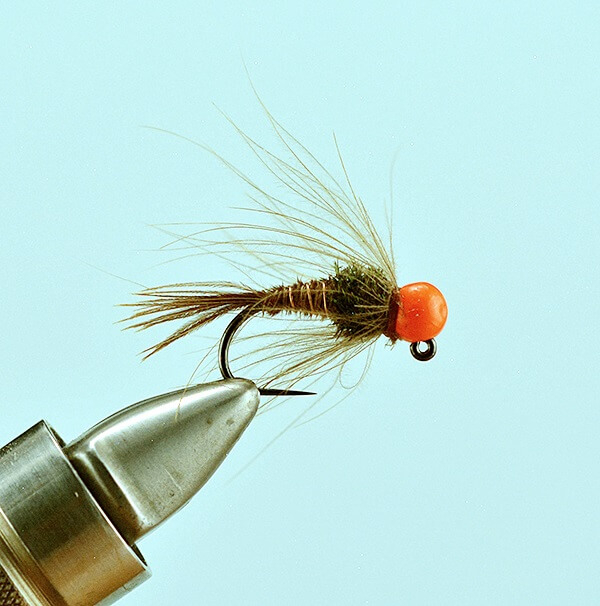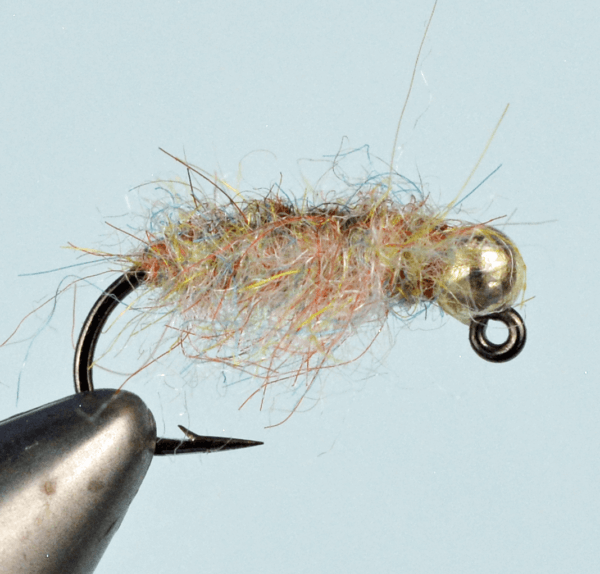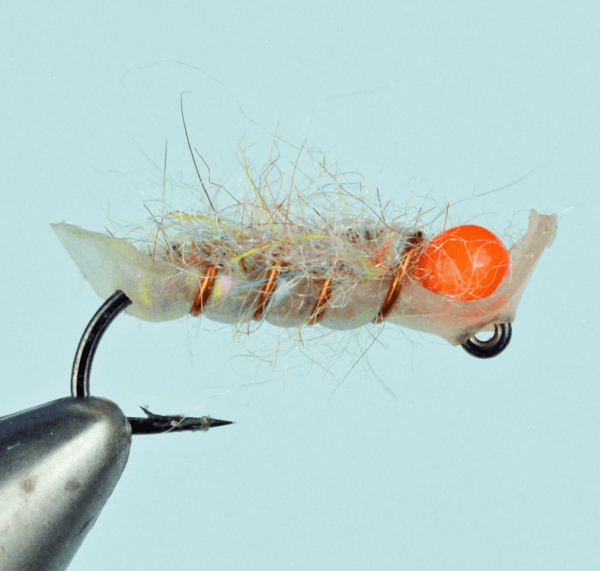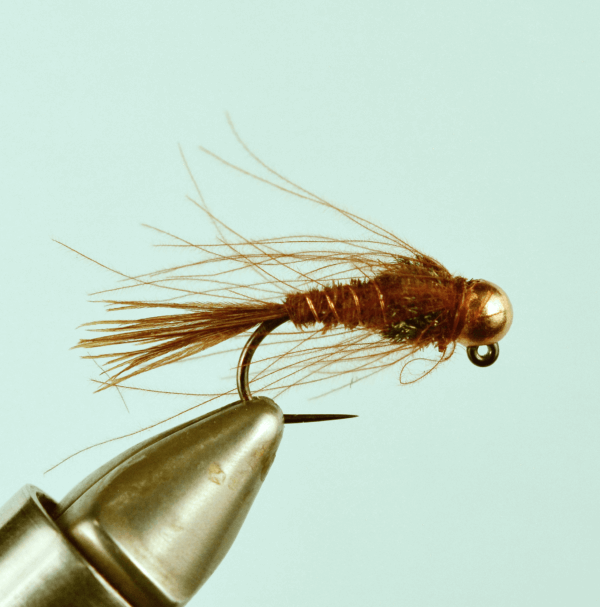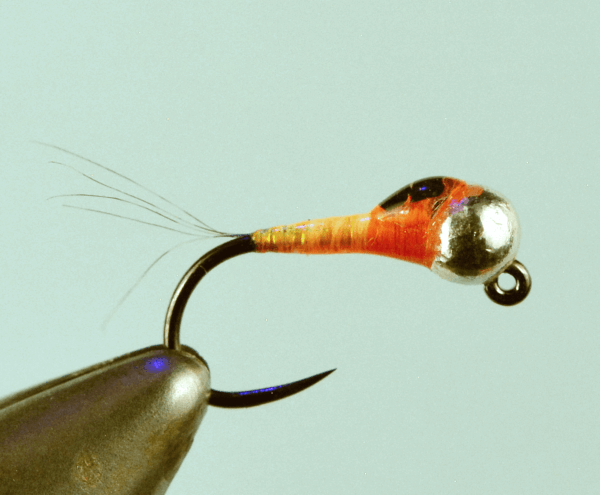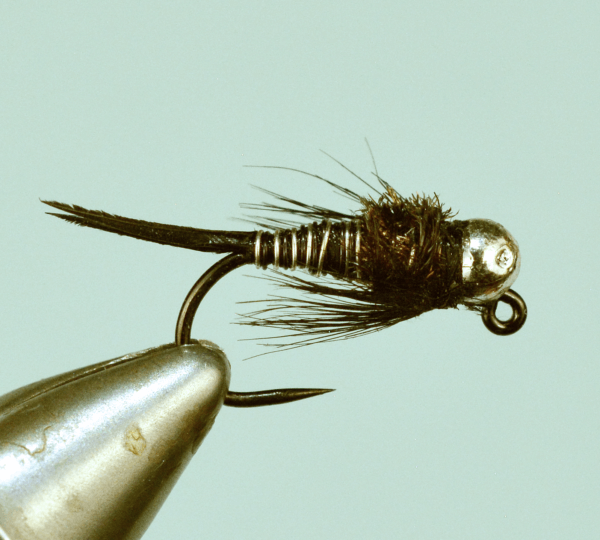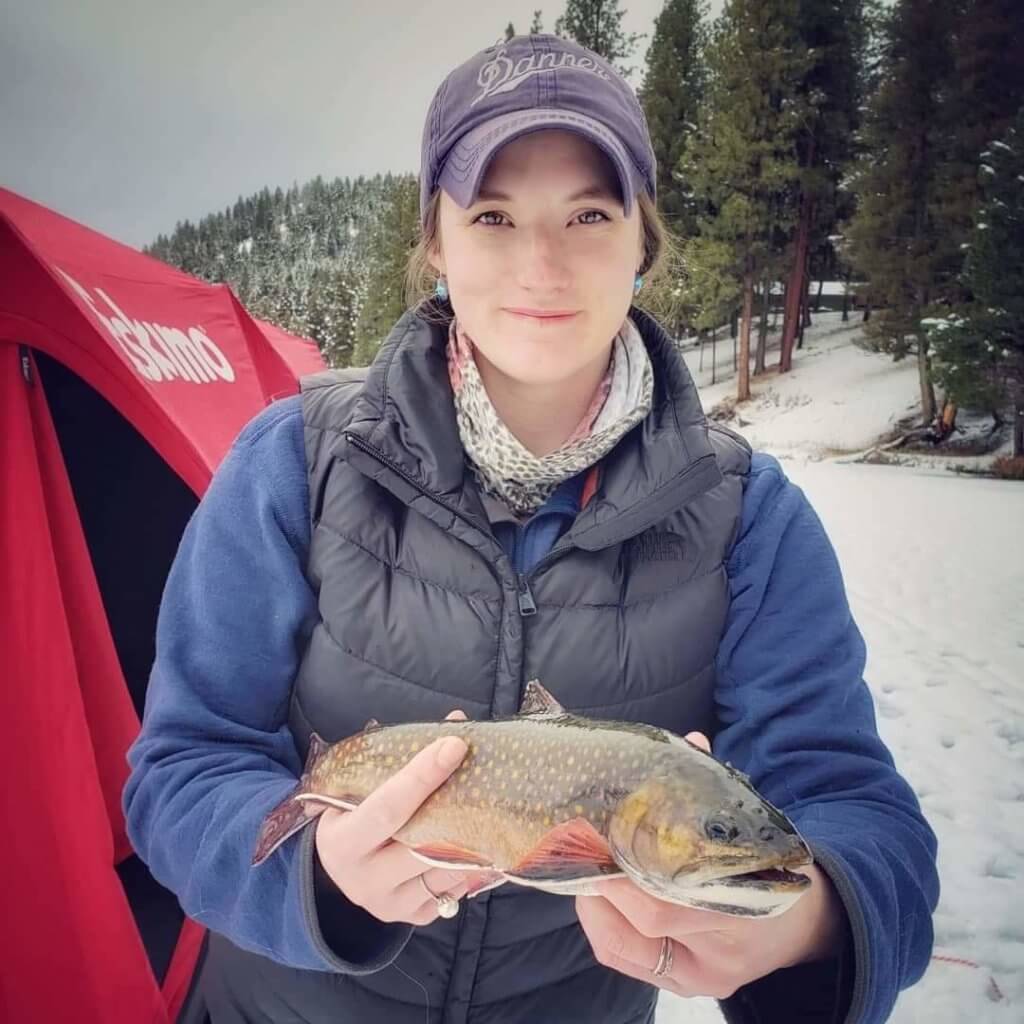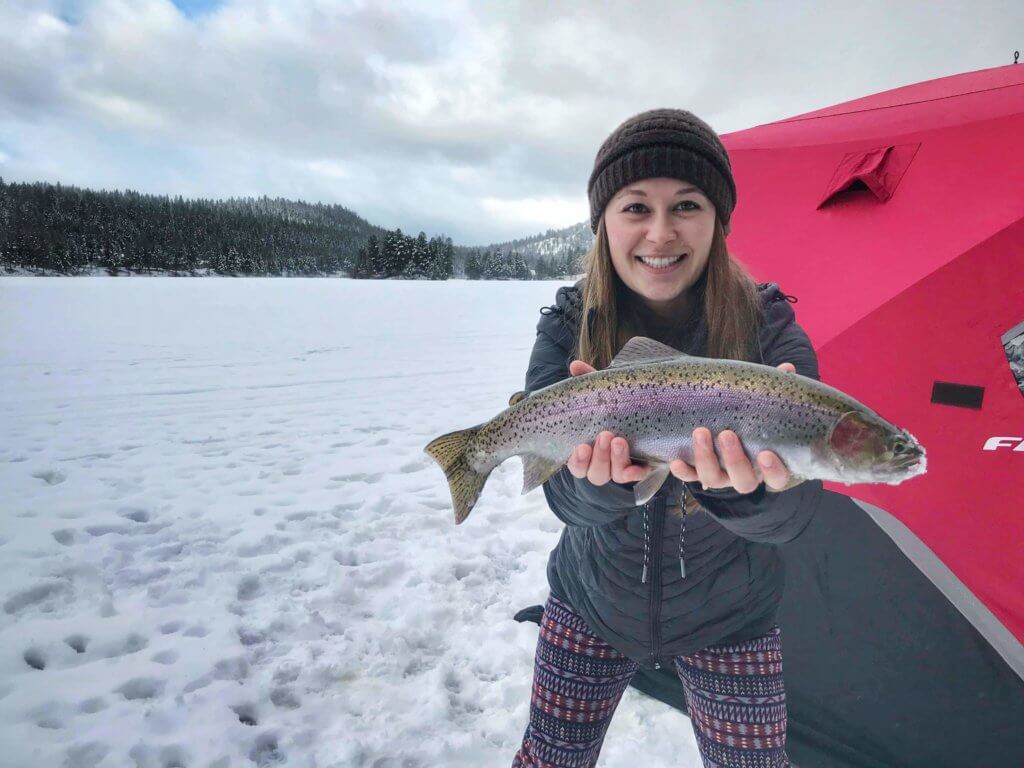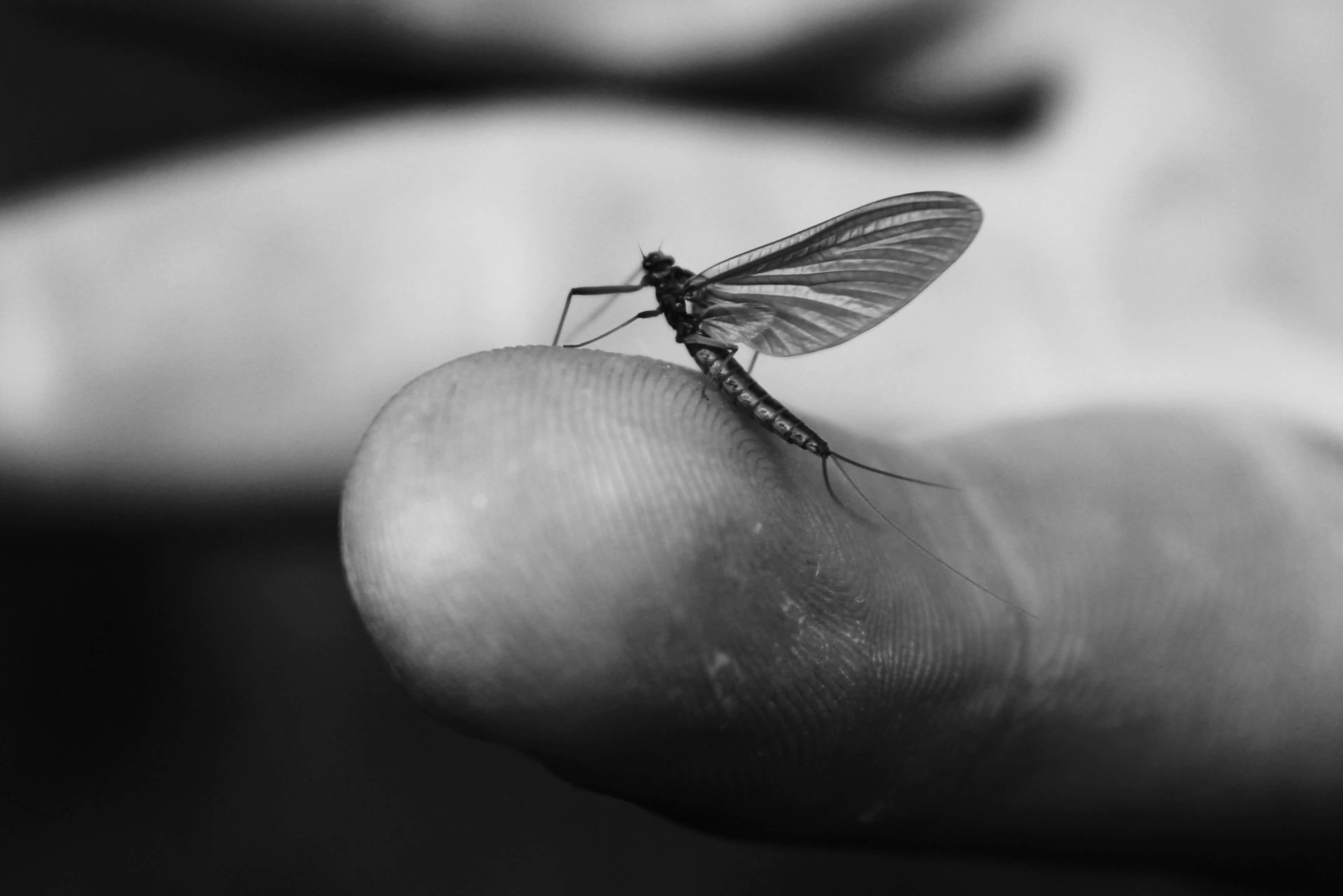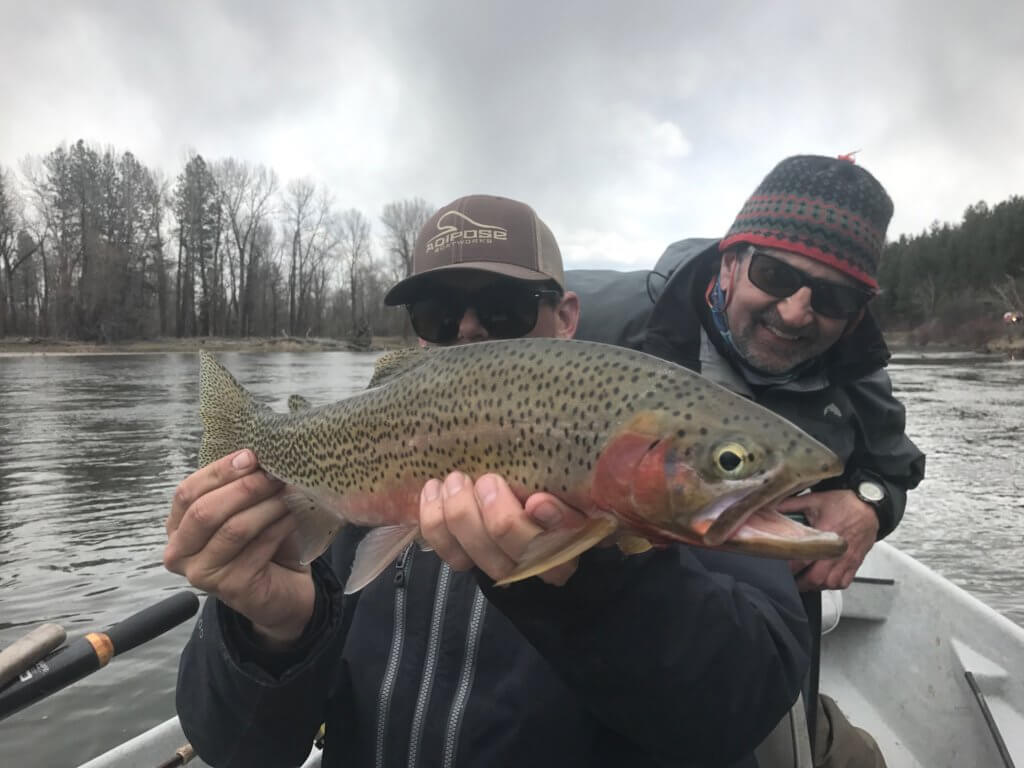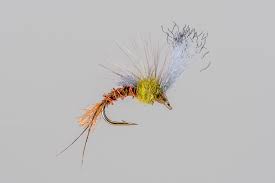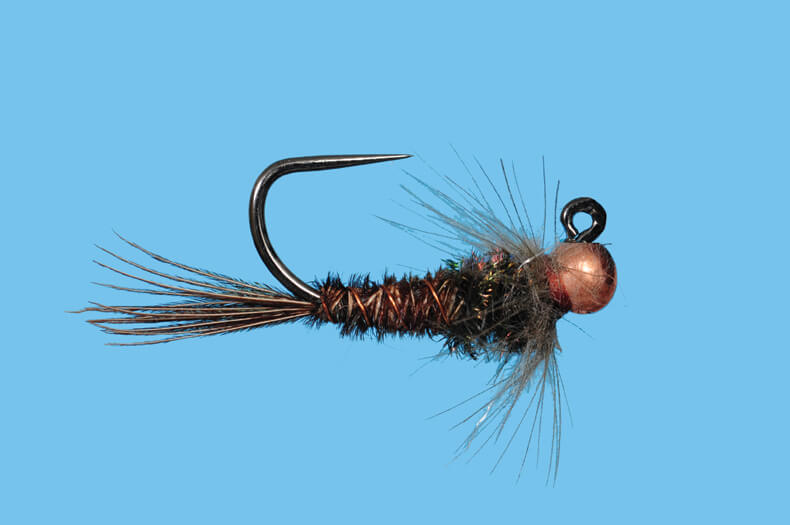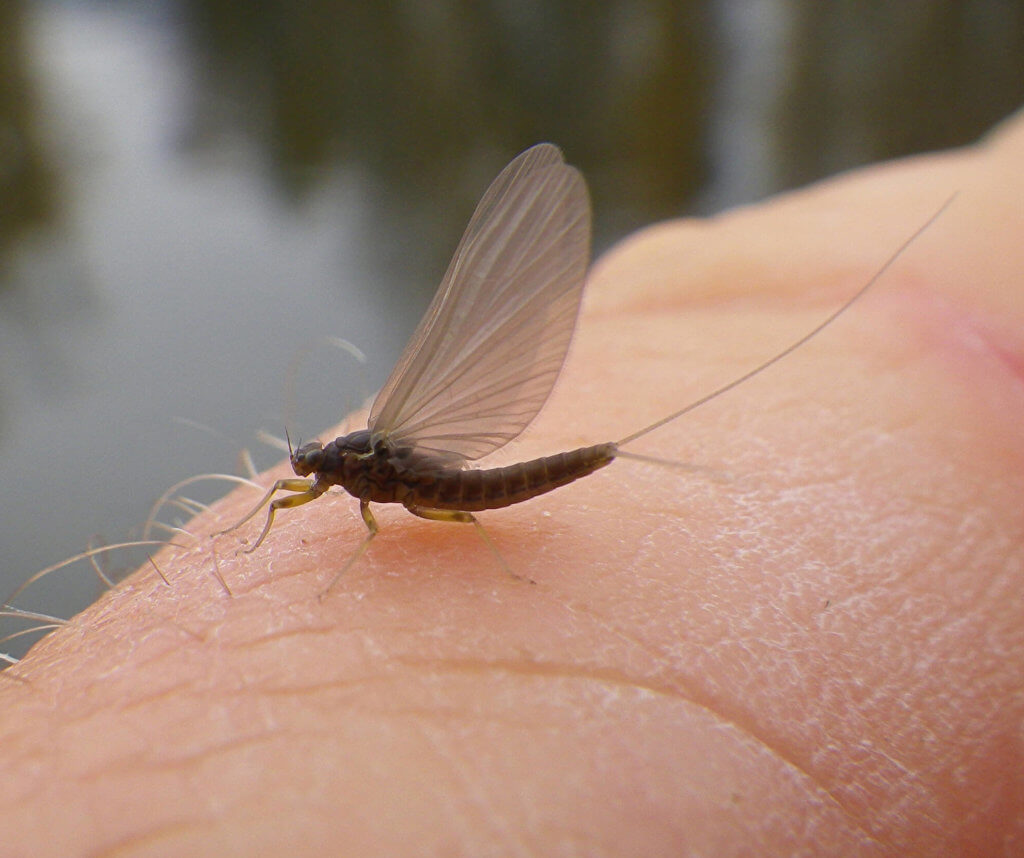Perdigon. Perdigone. Doesn’t matter how you spell it, Perdigons are sweeping the fly fishing world. With euro-nymphing as the buzzword, and effectiveness proven, the Perdigon jig nymph is now the hottest style fly we sell for trout at our Missoula fly shop and work anywhere in the world that trout are found. But where did this design come from? It’s a bit of a journey to get from the bottom of the ocean to the shores of the Blackfoot River, Bitterroot River, Clark Fork River and Rock Creek, but the journey was well worth it!
The jig, and jigging, has been popular in saltwater for many years, and then brought to it’s modern fruition in bass fishing. Using a molded lead head, the hook rides inverted (hook point up) and uses an up and down action to attract fish. The advantages of the jig slowly dawned on fly fishermen, and in the late ’80’s Bob Clouser tied the first Clouser Minnow, using Wapsi lead eyes instead of a molded lead head. The Clouser Minnow may have taken as many species as the Woolly Bugger- it’s that effective.
It took a while for the jig hook to catch on amongst fly fishers, but it’s here to stay now. When bouncing a jig nymph along the bottom, the inverted hook point snags less, saving the angler flies and time on the water. Additionally, in order to invert the hook point, the jig style nymph requires a tungsten bead. The tungsten is heavy enough to turn the hook point “over”, if you will. Tungsten is much heavier than the brass beads that were popularized by Theo Bakelaar back in the ’80’s. Theo is from Holland, and was the first to use gold beads in his flies. The slotted tungsten bead is a direct offshoot of Theo’s original gold bead.
Closely intertwined with the emergence of jig nymphs and Perdigons is Euro-nymphing, or Czech nymphing as it was originally called. Euro-nymphing is a highly sophisticated version of high stick nymphing, and without doubt the most effective method of fly fishing. Most of the World Championships of Fly Fishing have been won by people using Euro-nymph techniques. On hard fished waters these bottom bumping tactics move fish that have seen every fly and lure available. In Montana, Euro-nymphing takes so many fish because of the comparative lack of pressure found here. In the summer of 2019, a euro-nymphing guest who competed for a position on the Italian National Fly Fishing Team had two 100+ fish days with one of our Missoula fly fishing guides. Euro nymphing works!
Because Euro-nymphing relies on getting flies deep quickly, the jig nymph is perfect for the application. While not snagless, they certainly hook the bottom with less frequency. The tungsten bead gets the fly to the bottom faster than other materials used in construction. At the Missoulian Angler, we carry over 75 jig nymph patterns and many of them can be found on our online store, but not all of them are Perdigons. Any nymph can be tied on a jig hook- we carry Hare’s Ears, Pheasant Tails and Princes that are tied inverted on a jig hook. Not going to say they aren’t a bit different, but they’re quite recognizable. Many of our jig nymphs use a CDC collar. (More on that later!) The Perdigon is a style of fly that has specific construction techniques.
Perdigons are specialized jig nymphs, and while they vary in color and size, Perdigons are defined by their construction style. They are tied sparsely, usually with a Coq De Leon fiber tail, and the bodies are coated with either UV resin or epoxy. The coating is critical to the Perdigon, as it allows the fly to sink faster. Not due to additional weight, but because the coating is glass smooth, and almost frictionless in the water. The coating dramatically improves sink rate. Some Perdigons are tied with hot spots, or a bright, contrasting band or collar. The hot spot is used to attract fish to the fly, though they’re not found in all Perdigons.
The first time you look at a Perdigon, you wonder why they work. There doesn’t seem to be much there. There isn’t, and that’s the beauty of this style. Because the Perdigons don’t really imitate anything specific, they pretty much imitate most things. The color and shape could be a caddis pupa, a small stonefly or mayfly nymph. Because it’s a universal shape, the Perdigon is never really the wrong fly to tie on. It’s why it’s so effective. The non-denominational nature of the Perdigon makes it universally accepted by fish. Add that to the rapid sink rate, and you have the perfect storm for a nymph.
While Perdigons are very uniform in their shape, size and color are very important. Think of the dominant colors prevalent in insect life in the river at any given time, and match the color and size. In Spring, the G Kes and SR Olive Bullet are both effective, one imitating the Western March Brown and the other the BWO. As run-off ends, again the G Kes is a winner, imitating a small Golden Stone or a PMD nymph. The SR Bullet Quill is also effective for WMB’s and BWO’s. The Black SR Bullet is perfect for Nemoura nymphs as well as trico nymphs. As you can see, there’s a Perdigon out there for every hatch, and we carry them!
Here’s a heads up. When you go hopper/dropper with a Perdigon, especially in slower water, be ready for a “bump” when the fly hits the nadir of the drop. They sink so quickly that when the Perdigon gets to depth, it might pull on the back of the dry and make you think you had a strike. Just be ready for that. Additionally, you may want to shorten your dropper length just a bit, as the angle from the dry fly with a Perdigon is much steeper than a standard brass bead nymph. It’s why they work.
The CDC collar can be a very effective nymphing weapon if you choose to utilize it. CDC comes from the preen gland of waterfowl, and is very resistant to matting. It’s so effective with dry flies because it holds air bubbles, which refract light and look very realistic as wings on a dry fly. When you first cast a Jig Nymph collared with CDC collar, it’s dry, and retains air bubbles. Those air bubbles refract as well underwater they do on the surface, and really attract the fish. But after 3-4 dunkings, the feathers will mat and lose their ability to hold air bubbles. If the fish are fussy, you may want to take a little Frog’s Fanny or Shimizaki desiccant and dress the collar again. If you’re using a jig with dubbing, try to keep the desiccant away from the body. With a dressed collar, your jig nymph will become a more effective fly. Just a thought!
Jig nymphs have changed the way we nymph for trout. They sink faster, getting them to “the zone” faster. That alone makes them more effective! Add the inverted hook which snags less, and now you’re more willing to get to the zone! You become a better nympher when you use a jig nymph. The best fly fishing guides in Missoula have been using tungsten bead join nymphs for at least 6 years. We think they will change the way you approach your nymphing, and make you a more successful angler.

